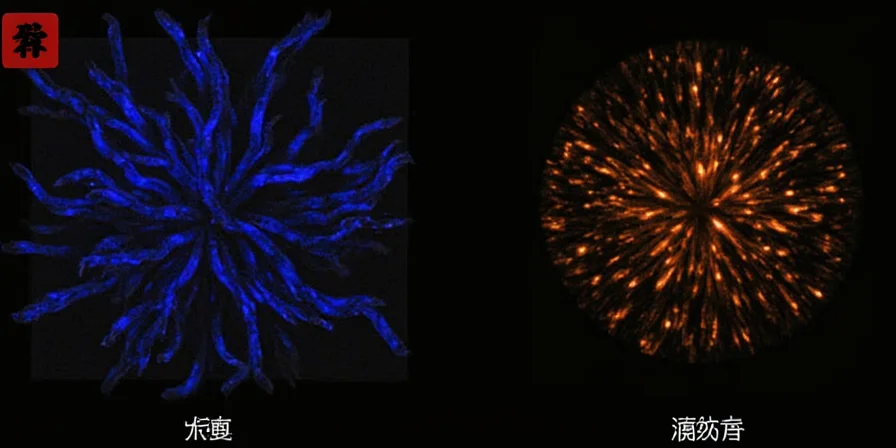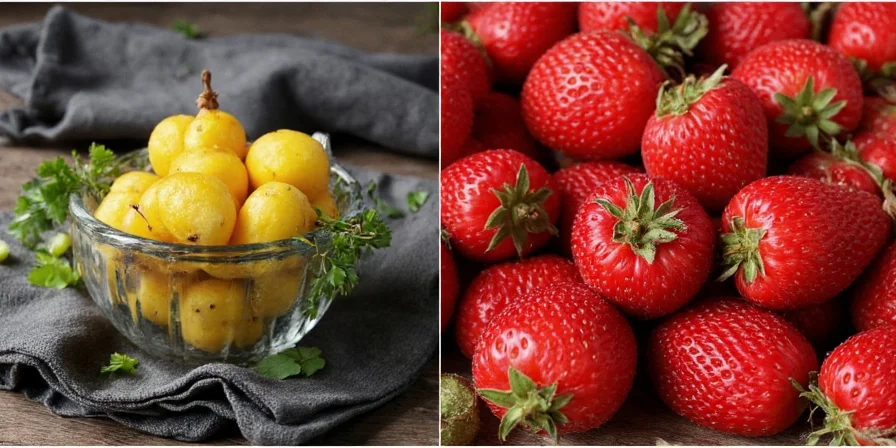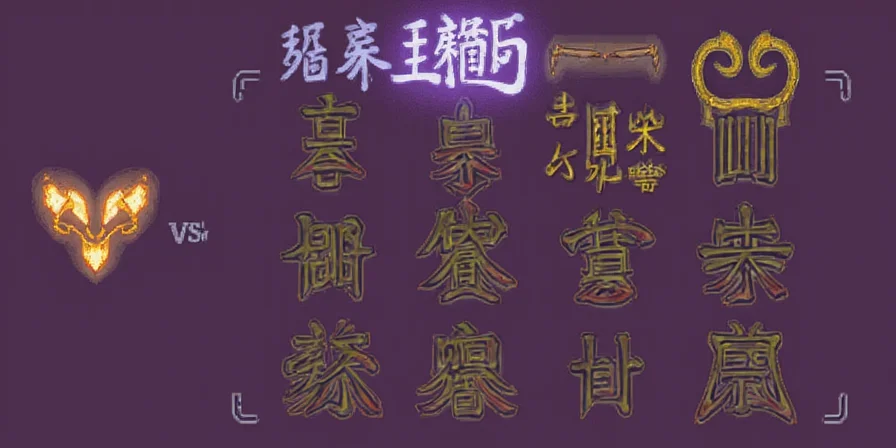Sweet, smoked, and hot paprika differ fundamentally in flavor chemistry, processing methods, and culinary applications—not just heat level. Sweet paprika delivers pure pepper flavor with zero capsaicin; smoked paprika contains guaiacol compounds from oak drying; hot paprika measures 15,000-30,000 SHU from intact seeds/membranes. Using the wrong type causes recipe failures: sweet paprika won't provide smokiness for paella, while smoked paprika ruins color-sensitive deviled eggs. This guide reveals exactly when to use each variety based on scientific analysis and chef-tested protocols.
| Variety | Heat Level (SHU) | Key Flavor Compounds | Top Culinary Uses | Common Substitution Mistakes |
|---|---|---|---|---|
| Sweet Paprika | 0 SHU | High carotenoids, no capsaicin | Deviled eggs, Hungarian goulash, color-critical sauces | Using in paella (lacks smokiness) |
| Smoked Paprika | Varies (0-5,000 SHU) | Guaiacol from oak smoking | Spanish chorizo, patatas bravas, barbecue rubs | Using in potato salad (overpowers) |
| Hot Paprika | 15,000-30,000 SHU | Measurable capsaicin | Spicy sausages, robust marinades, Transylvanian paprikás | Using in tomato soup (unbalanced heat) |
Home cooks seeking flavor precision, this guide cuts through paprika confusion with actionable insights. Understanding these distinctions prevents recipe mishaps and unlocks authentic flavors. We examine how pepper varieties, processing methods, and regional traditions create distinct profiles—no more bland results or accidental fire.
Paprika Fundamentals: Beyond the Basics
Paprika originates from dried, ground Capsicum annuum peppers. While explorers introduced peppers to Europe in the 16th century, Hungary transformed them into the vibrant spice we know today through selective breeding and climate adaptation. Modern paprika varies based on three critical factors:

- Pepper selection – Sweet varieties use thick-walled, mild peppers; hot types incorporate seeds and membranes
- Drying method – Air-dried vs. oak-smoked creates fundamentally different flavor compounds
- Regional standards – Hungary's 23 protected designations vs. Spain's smoked varieties
This explains why "regular paprika" doesn't exist as a standardized category—it's often a supermarket blend masking critical flavor differences.
Sweet Paprika: Characteristics and Origins
Sweet paprika represents the purest expression of pepper flavor without heat. Made exclusively from thick-walled, ripe peppers with seeds and membranes removed, it delivers:

- Hungarian heritage – Protected designations like Édesi claim specific terroir influences
- Color chemistry – High carotenoid content creates vivid red hues that resist fading
- Flavor profile – Sweet vegetal notes with subtle berry undertones, zero capsaicin burn
For authentic results, seek Hungarian sweet paprika labeled "Édes"—avoid generic supermarket blends that often mix in filler peppers.
Hot and Smoked Paprika Varieties
"Regular" is a misnomer—these are distinct categories with unique production methods:

- Hot Paprika – Made from thin-walled peppers with seeds intact; capsaicin levels vary by region (Hungarian Óroshi vs. Spanish Pimentón Picante)
- Smoked Paprika – Peppers dried over oak fires for 10-15 days; Spanish Pimentón de la Vera has protected status
- Semi-Sweet – Middle ground with mild heat (2,500-5,000 SHU) and subtle smokiness
Crucially, smoked paprika isn't inherently hot—Spain classifies it as dulce (sweet), agridulce (semi-sweet), or picante (hot).
Strategic Usage Guide
Maximize flavor impact with these chef-tested techniques:

- Sweet Paprika Precision
- Add in final cooking stages to preserve color (heat degrades carotenoids)
- Mix with acidic components like vinegar to stabilize hue
- Use in dairy-based sauces where heat would curdle milk
- Smoked Paprika Mastery
- Bloom in oil before adding liquids to release flavor compounds
- Pair with umami ingredients (tomato paste, mushrooms) to enhance depth
- Avoid high-heat searing which creates bitter notes
- Hot Paprika Control
- Toast lightly to mellow harsh heat while intensifying flavor
- Balance with sweet elements (honey, roasted peppers) for complexity
- Use in long-simmered dishes where heat distributes evenly
Debunking Common Misconceptions
Separate fact from fiction with evidence-based clarity:

- Myth: "All red paprika is interchangeable"
Reality: Color indicates carotenoid levels, not flavor intensity. Hungarian sweet paprika is deeper red than some hot varieties. - Myth: "Smoked paprika always means spicy"
Reality: Spanish smoked paprika comes in three certified types—dulce (sweet), agridulce (semi-sweet), and picante (hot). - Myth: "Paprika loses potency quickly"
Reality: Properly stored (airtight, dark, cool), sweet paprika retains color for 24 months; smoked varieties last 18 months. - Myth: "One paprika fits all cuisines"
Reality: Hungarian goulash requires specific Édesi sweet paprika; Spanish paella demands Pimentón de la Vera.
Precision-Driven Recipes
These tested methods highlight each variety's strengths:

- Color-Perfect Deviled Eggs
Use Hungarian sweet paprika in both yolk filling and garnish. The carotenoids maintain vibrancy where smoked varieties would turn muddy. - Authentic Madrid-Style Patatas Bravas
Bloom Spanish smoked paprika (dulce) in olive oil before adding garlic. Critical: Add after oil reaches 160°C to activate flavor without bitterness. - Transylvanian Chicken Paprikás
Requires double paprika technique: Sweet paprika for color base, hot paprika added later for balanced heat. Never substitute smoked—alters cultural authenticity. - Carotenoid-Rich Sweet Potato Fries
Toss fries in oil with sweet paprika before baking. The fat-soluble carotenoids adhere better, creating even color without raw spice taste.
Elevating Your Culinary Toolkit
Mastering paprika isn't about memorizing types—it's understanding how pepper biology and processing create distinct flavor pathways. Sweet paprika's carotenoid richness makes it indispensable for color-critical dishes, while smoked varieties contribute complex phenolic compounds only achievable through traditional drying. Hot paprika's capsaicin profile requires strategic balancing.

By treating paprika as a spectrum of ingredients rather than a single spice, you gain precise control over flavor, color, and cultural authenticity. Start with one specialty variety that matches your most-cooked cuisine—your dishes will reflect this attention to detail immediately.
Frequently Asked Questions
Can I substitute sweet paprika for smoked paprika in recipes?
Only in emergencies. Sweet paprika lacks the guaiacol compounds created during smoking. For closest results, combine sweet paprika with a pinch of liquid smoke (1/8 tsp per tsp paprika), but note this won't replicate authentic depth from traditional oak drying.
Why does my paprika sometimes taste bitter?
Bitterness occurs when paprika exceeds 175°C (350°F). Smoked varieties are particularly sensitive—their phenolic compounds degrade rapidly at high heat. Always bloom paprika in oil below smoking point, and never add to screaming-hot pans.
How can I verify paprika quality without tasting?
Check three indicators: 1) Vibrant red color (dull = old), 2) Fine, uniform powder (grittiness indicates poor processing), 3) Strong pepper aroma (musty smell = moisture damage). For smoked varieties, the scent should resemble oak campfire, not generic "smoke" flavoring.
Does paprika nutrition change between varieties?
Yes significantly. Sweet paprika contains 3x more vitamin C than hot varieties due to unripe pepper usage. Smoked paprika develops antioxidant polyphenols during drying. All types provide carotenoids, but sweet varieties have higher beta-carotene concentration for better color stability.











 浙公网安备
33010002000092号
浙公网安备
33010002000092号 浙B2-20120091-4
浙B2-20120091-4